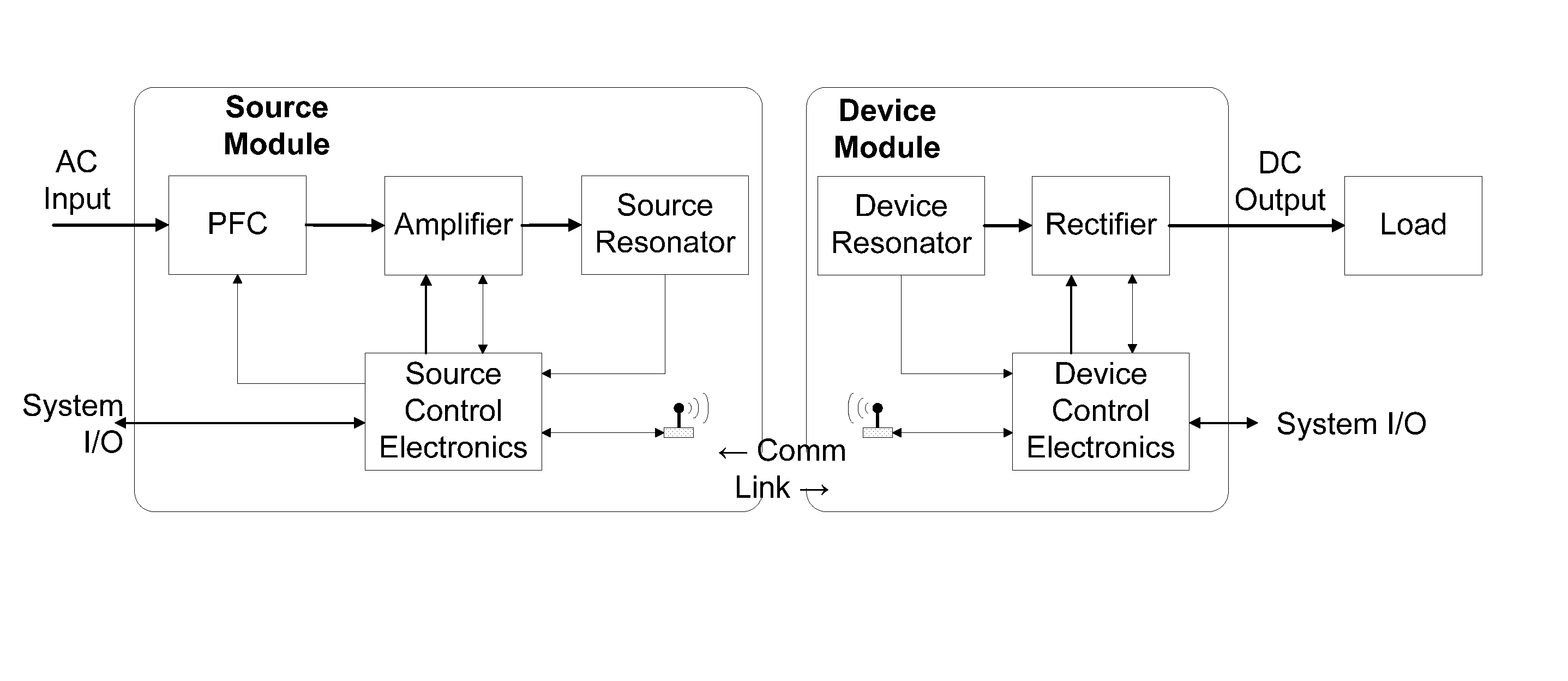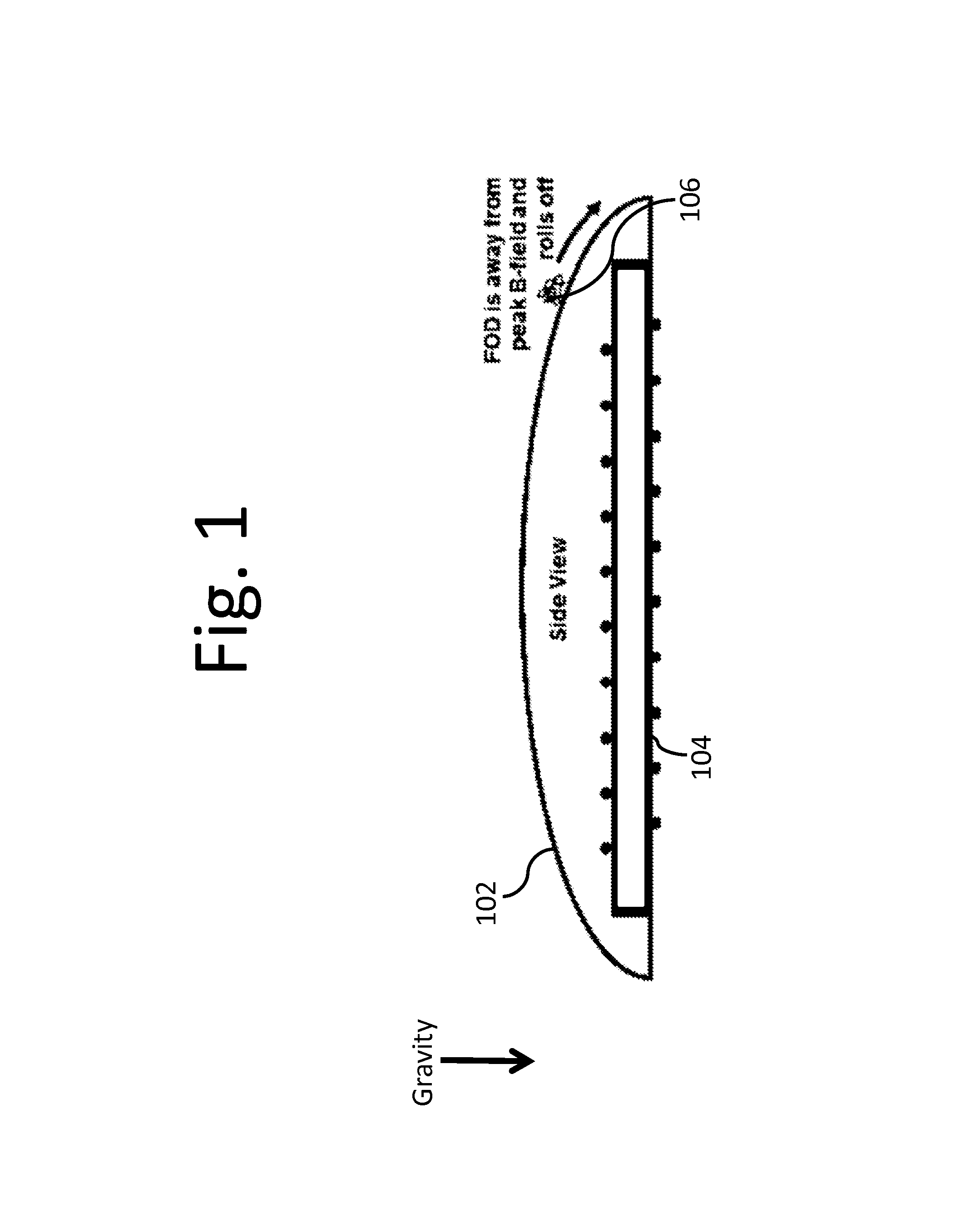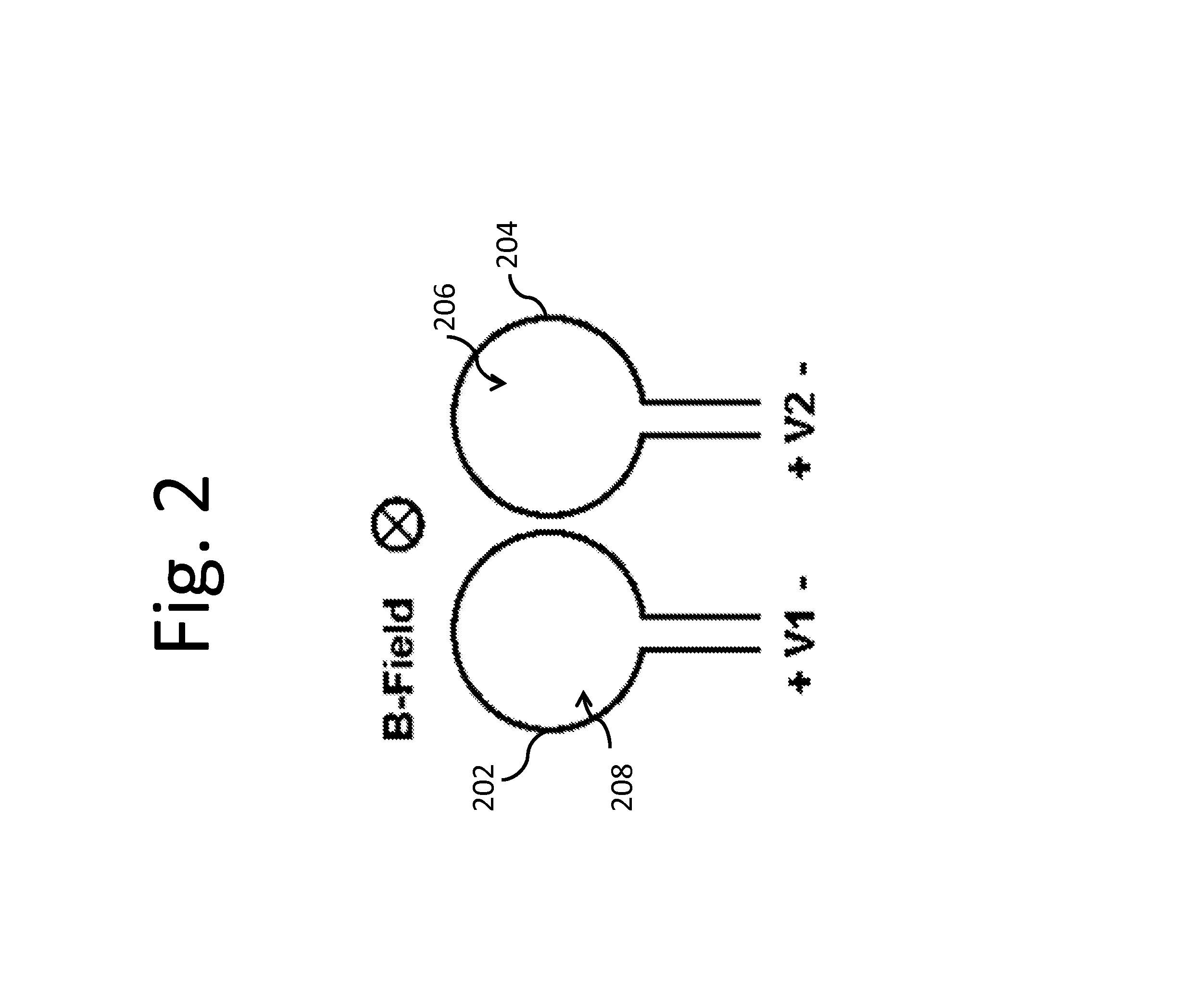Foreign object detection in wireless energy transfer systems
- Summary
- Abstract
- Description
- Claims
- Application Information
AI Technical Summary
Benefits of technology
Problems solved by technology
Method used
Image
Examples
Embodiment Construction
[0021]Methods for mitigating FOD risks can be categorized as passive mitigation techniques and active mitigation techniques. Passive mitigation techniques may be used to prevent FOD from entering or remaining in the regions of high magnetic field. Passive mitigation techniques may lower the likelihood of FOD interacting hazardously with magnetic fields. Active mitigation techniques may be used detect and react to the presence of FOD.
[0022]Passive Mitigation Techniques
[0023]Passive mitigation techniques may be used to keep FOD from entering the regions between resonators or specific regions of high magnetic field, thereby preventing the interaction of the FOD with the magnetic fields.
[0024]By way of additional exemplary embodiments, the design of a resonator cover in a wireless power transfer system may provide a passive FOD mitigation technique. In embodiments the enclosure of a source and / or device and / or repeater resonator may be shaped to prevent FOD from coming close to the area...
PUM
 Login to View More
Login to View More Abstract
Description
Claims
Application Information
 Login to View More
Login to View More - R&D
- Intellectual Property
- Life Sciences
- Materials
- Tech Scout
- Unparalleled Data Quality
- Higher Quality Content
- 60% Fewer Hallucinations
Browse by: Latest US Patents, China's latest patents, Technical Efficacy Thesaurus, Application Domain, Technology Topic, Popular Technical Reports.
© 2025 PatSnap. All rights reserved.Legal|Privacy policy|Modern Slavery Act Transparency Statement|Sitemap|About US| Contact US: help@patsnap.com



